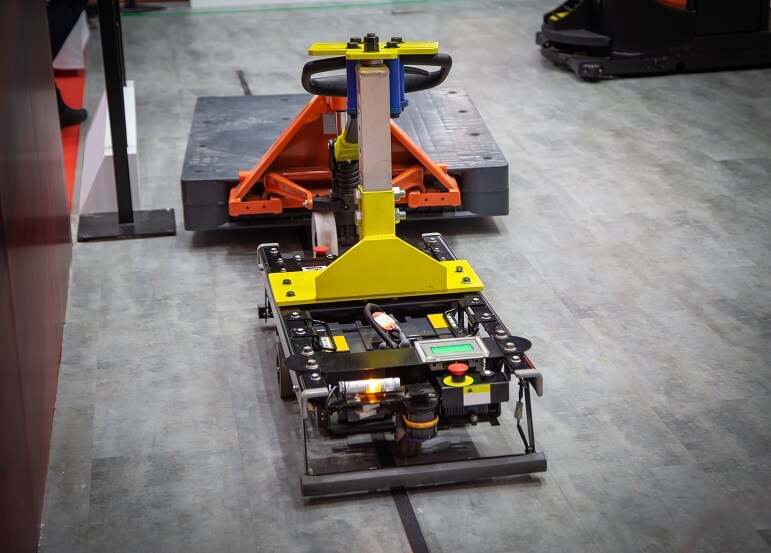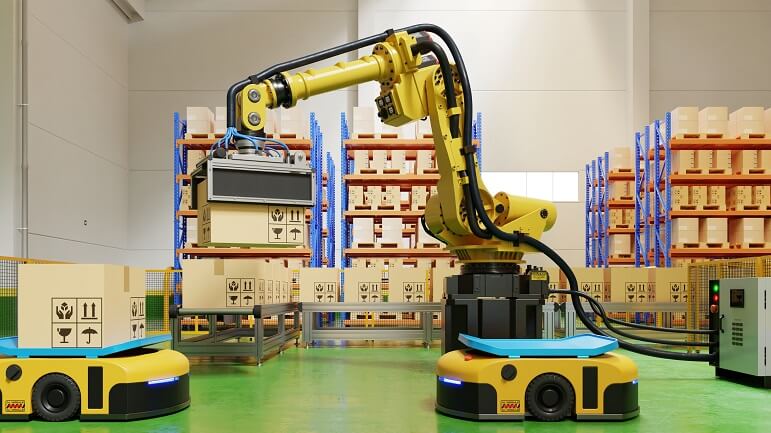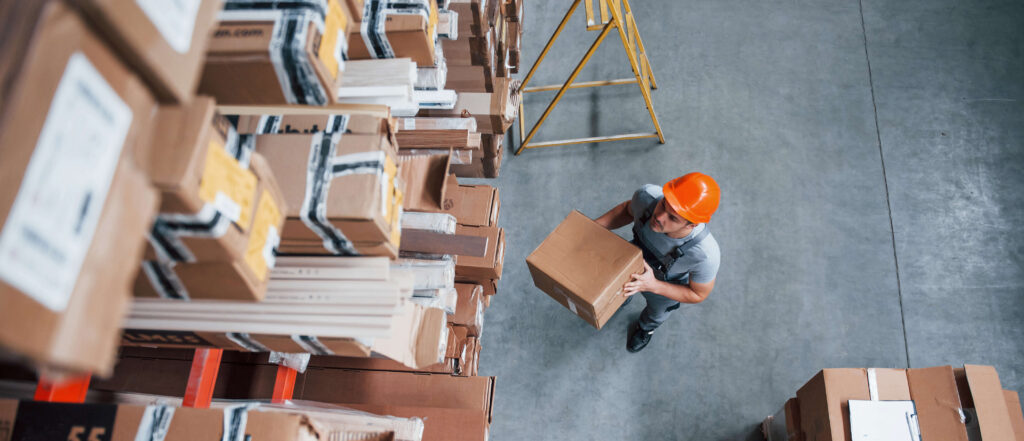Benefits of warehouse automation in supply chain management
Warehouse technologies and automated systems can help solve warehouse and supply chain issues cost-effectively.
The right technologies can increase efficiency by improving stock control and pick accuracy, warehouse flexibility, responsiveness, and safety and security. They can also help strengthen supplier relationships and improve customer service levels.
By combining different technologies, items can easily be moved around warehouses and stored in their respective locations.
In this article, we explore the benefits of warehouse automation. We’ll also look at some current and emerging technologies, and how they can enhance your inventory planning and optimisation strategies.
Warehouse management systems (WMS)
Warehouse management systems support day-to-day warehouse operations. WMS capabilities will vary, but they have a range of applications depending on your business needs. The most resilient supply chains use systems that can process big data and provide advanced analytics and real-time insights.
A warehouse management system based on Radio Frequency ID (RFID) can help you collect, transfer, check, and update bulk data on the location of your goods. It works in real-time, from entry to dispatch and delivery, reducing labour intensity and scanning errors.
Automating warehouse management processes can remove the need for manual inventory tracking.
Increased stock visibility can improve warehouse processes by reducing human error and freeing staff to focus on strategic inventory planning. Improving inventory management processes can also help make the most of storage space by tracking the flow of items around the warehouse.
Combining big data, advanced analytics, and real-time insights with a modern ERP system can help you optimise your supply chain and improve its resilience.

Automated picking systems
Picking items for orders is one of the most time-consuming warehouse activities. Warehouse automated technology, such as automated picking systems, supports warehouse teams by streamlining processes.
Implementing automated picking systems can reduce human picking errors and reduce walking and sorting time by finding the most efficient routes through a warehouse to each item.
Choosing the right picking system for your company will depend on how many items you hold, your order volumes, and your warehouse set-up. There are several types of automated picking systems:
Pick-to-light
When a picker scans a barcode, pick-to-light systems use LEDs to show an item’s location. These make it easy for the picker to identify items quickly as they follow the lights in the warehouse.
Voice picking
With voice picking, instructions on what to pick and its location are sent to the pickers via headsets. The pickers then send verbal confirmation back through the headset to complete the task.
Mobile scanner-based picking
All items in the warehouse are allocated a unique barcode. Workers use mobile scanners that show their pick lists and item locations. When they scan the barcode, the scanner will mark the item as complete or notify the picker of an error. This immediate notification of errors improves the speed of their rectification and pick accuracy.
Collaborative mobile robots
Robots have a range of uses in warehouse automation. For example, collaborative robots can work with warehouse operatives to move stock items around the warehouse once the picker places them in the robot’s container.
They can also use artificial intelligence and machine learning to plan the shortest and most efficient routes through the warehouse.
Automated guided vehicles
Automated guided vehicles (AGV), such as smart forklifts and pallet carts, are increasingly used to move stock around the warehouse. They follow digital paths, loading and unloading items without the need for human drivers.
Depending on your warehouse and order process, a combination of vehicles could support your warehouse team.
Pallet movers
A Pallet Mover AGV, also known as a fork-over AGV, is a pallet truck AGV used to transport palletised loads. They feed production lines or move finished goods from production to the warehouse. Forklifts can increase warehouse efficiency, as they can handle various racking types.
Automated guided carts and under-rides
Automated Guided Carts (AGCs) and Under Rides are similar mobile platform robots and are generally the most affordable. Carts carry goods around the warehouse, while under-rides can carry taller loads.
AGV tuggers
An AGV tugger vehicle is designed for towing carts. It can carry the most significant loads and transport many carts simultaneously. The vehicle can follow automated loops with predetermined stop locations or switch to manual operation.
They can also follow longer routes, such as travelling between warehouses on the same industrial estate.

Very narrow aisle trucks and automated reach trucks
Automated, very narrow aisle trucks and automated reach trucks use high-lifting loading operations to lift and transport items simultaneously. They can work around small aisles where companies utilise space by using high shelving units. They can adjust their lift and travel speeds depending on the weight they’re carrying.
Robots and drones
Robots and drones have various uses in warehouses.
Robots can pick items, pack boxes, and transport goods around the warehouse.
Autonomous mobile robot arms can perform repetitive actions, such as sorting and labelling, packing, or moving items along a production line, without posing health risks.
Drones can also help move stock around the warehouse, check items stacked on higher shelves, or identify free space. They can also carry out inventory audits, and stock takes by counting and finding items much faster than the operator.
Drones with photography or videography technology can also send visual alerts or supporting information to the WMS.
You can adapt robot and drone processes to meet your changing needs for speed, efficiency, and accuracy.

Summary
While these examples of warehouse automation might seem advanced and expensive, you don’t need to overhaul your entire warehouse system in one go. The role of technology in supply chain management is evolving and subsequently getting cheaper. Off-the-shelf solutions are readily available and can make previously out-of-reach technology much more affordable.
Reviewing your objectives and key areas for improvement can highlight priority areas for change so you can bring in the most relevant technologies first.
For example, introducing technologies that can reduce the reliance on manual labour can help with the continuing workforce shortages. In turn, this can help improve workflows and reduce the risk of bottlenecks in warehouses.
If demand forecasting and stockouts are causing you problems, implementing an inventory optimisation tool like EazyStock can help. To find out more about improving your stock availability and mitigating the impact of supply chain disruptions, book a demo.










